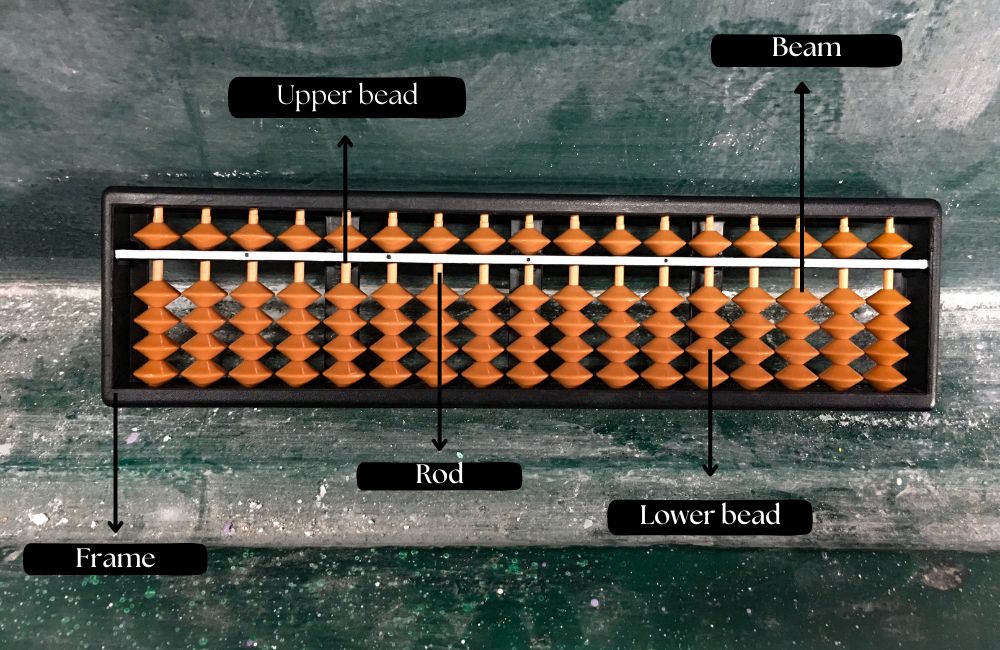Mathematics is the subject most of us love to hate. Calculations and playing with numbers are part and parcel of our everyday lives.
It is said, “Go down deep enough into anything, and you will find Mathematics”.
Abacus learning makes the math calculation process easy and interesting. The word “ABACUS” is a Latin word derived from the Greek word for calculating table, ABAX . It’s a simple device that originated in Babylon about 5000 years ago. It is still widely popular in Japan, China, the Middle East, and Russia. The abacus tool is used to perform all the basic arithmetic calculations like addition, subtraction, multiplication, and division. It can also be used to extract the square root and the cubic root.
Types of Abacus
Two of the most commonly used abacus are the Chinese and the Japanese. The Chinese abacus, also known as ‘saunpan’ consists of 5 beads below and 2 beads above the reckoning bar. It can be used to count up to 16 different numbers from 0 to 15. On the other hand, the Japanese abacus, also known as the “soroban” consists of 4 beads below and 1 bead above the reckoning bar. Each rod can represent 10 different numbers from 0 to 9. If you are interested to know about the Japanese vs Chinese abacus click here.
Nowadays, the Soroban abacus is the most popular and is considered the modern version of the abacus. It consists of a rectangular frame with multiple rods. Each rod consists of beads that can be moved up and down with the help of fingers. Further, the abacus is separated into two unequal parts with the help of a horizontal crossbar. The beads placed on the upper portion of the crossbar are known as upper beads or heaven beads, and those placed below the crossbar are called lower or earth beads.
Understanding Abacus Counting
The numerical value of each bead depends on its position in the abacus. Each rod represents a column of numbers. For example, in the first column to the right, the four earth beads carry the value of one, and the one heaven bead carries the value of five. While we go further to the right of the abacus, the value of beads gets multiplied by 10. So, each earth bead in the second column to the right will represent 10, and each heaven bead stands for 50. Similarly, on the third rod from the right, each earth bead will represent 100, while each heaven bead stands for 500, and so on.

Counting on the abacus is done by moving the beads up and down the rods. The beads are moved with the help of the thumb and the index finger. Moving the bead towards the horizontal rod is used for addition, and moving away for subtraction. Lower beads are moved up by the thumb finger, and for all other bead movements, the index finger is used. Before using the abacus, make sure that all the beads are in the neutral position, representing zero. This can be done by placing the thumb and index finger on the horizontal crossbar lightly and moving it across from left to right. This has to be done every time before starting a new calculation.
To operate, the abacus is first placed flat. Then, all the beads are pushed towards the outer edges, away from the crossbar. Now, slide the beads upwards or downwards to represent numbers. The number 8, for example, is represented by moving one heaven bead (worth 5) downward toward the crossbar and three earth beads (worth one each) upward toward the crossbar. The number 34 is represented by moving three earth beads on the second rod (worth 10 each) and four earth beads on the first rod (worth 1 each) upward. Addition, subtraction, and even lengthy multiplication and division problems can be solved with an abacus. Advanced users can even find the square root of any number.
Best Age to Start Abacus Training for Kids
The best age to introduce abacus learning is from 5 until the age of 15. This period is said to be the brain-developing stage, which makes it easier for the child to master the abacus. With regular practice, the finger movement can be perfected such that even without the physical rod, the child can do the calculations. This is known as the mental calculation. Instead of using a real abacus, the child imagines one in their mind. They move their fingers in the air to perform calculations. These practices exercise the brain to such an extent that one will be able to perform complex calculations of multiplication and division easily.
As the abacus learning process involves coordination among all our sensory organs like the ear, eyes, fingers, and brain, it will also help to drastically improve the memory power, concentration, grasping power, reading, and listening power of children. The abacus is usually taught level-wise. As students move to the next higher level the difficulty level also increases. Practice is the most important thing for perfecting abacus calculation. With regular practice students can improve their mental math speed.

To Sum Up
The abacus is one of the fastest tools for learning and calculating math. Faster than a calculator. It helps young learners develop strong math skills from an early age. It also builds a solid foundation for success in primary and high school. Besides enhancing the overall comprehension of math – other important benefits of learning abacus include the following:
- Boosts better and faster calculation skills
- Increases endurance for stress and pressure
- Improves problem-solving abilities
- Sharpens concentration and observance
- Develops confidence and self-esteem
- Heightens stronger mental visualization skills
- Increases memory power and sharpens overall mental formation
We can conclude that abacus learning will improve the child’s overall personality and this trait would be reflected throughout their academic performances and beyond.